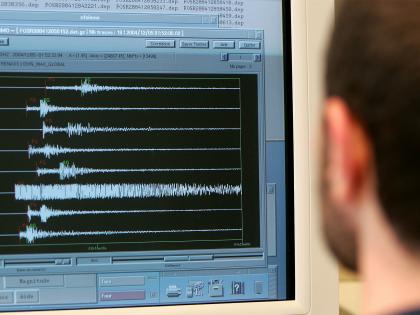4.6 magnitude earthquake jolts Pakistan
By ANI | Updated: October 21, 2025 12:50 IST2025-10-21T12:49:25+5:302025-10-21T12:50:05+5:30
Islamabad [Pakistan], October 21 : An earthquake of magnitude 4.6 struck Pakistan on Tuesday, according to National Center for ...

4.6 magnitude earthquake jolts Pakistan
Islamabad [Pakistan], October 21 : An earthquake of magnitude 4.6 struck Pakistan on Tuesday, according to National Center for Seismology (NCS).
In a post on X, NCS noted that the earthquake occurred at a depth of 170 kilometres at 11:29 AM Indian Standard Time (IST).
"EQ of M: 4.6, On: 21/10/2025 11:29:35 IST, Lat: 36.67 N, Long: 72.80 E, Depth: 170 Km, Location: Pakistan."
https://x.com/NCS_Earthquake/status/1980517263938842745
Earlier on Monday, an earthquake of 4.7 magnitude struck Pakistan according to the NCS.
Earthquakes of moderate 4.0 intensity had hit Pakistan on Saturday and Sunday also.
Earlier in the early hours of Tuesday, an earthquake of magnitude 4.3 struck Afghanistan.
In a post on X it staated that the earthquake occurred at a depth of 110 kilometres at 07:43 AM Indian Standard Time (IST)"EQ of M: 4.3, On: 21/10/2025 07:43:25 IST, Lat: 36.35 N, Long: 70.86 E, Depth: 110 Km, Location: Afghanistan", NCS wrote on X.
Afghanistan, Pakistan, and northern India lie in one of the most seismically active zones in the world, where the Indian and Eurasian tectonic plates meet. The region frequently experiences moderate to strong earthquakes, often felt across borders due to the proximity of fault lines.
Pakistan is among the seismically active countries in the world, crossed by several major faults.
This collision zone makes the country highly vulnerable to violent earthquakes. Provinces such as Balochistan, Khyber Pakhtunkhwa, and Gilgit-Baltistan lie on the southern edge of the Eurasian plate, while Sindh and Punjab are located on the northwestern edge of the Indian plate, contributing to frequent earthquake activity.
Balochistan is located near the active boundary between the Arabian and Eurasian tectonic plates.
Other vulnerable regions, such as Punjab, which lies on the northwestern edge of the Indian plate, are susceptible to seismic activity. Sindh, though less prone, is still at risk due to its location.
Disclaimer: This post has been auto-published from an agency feed without any modifications to the text and has not been reviewed by an editor
Open in app